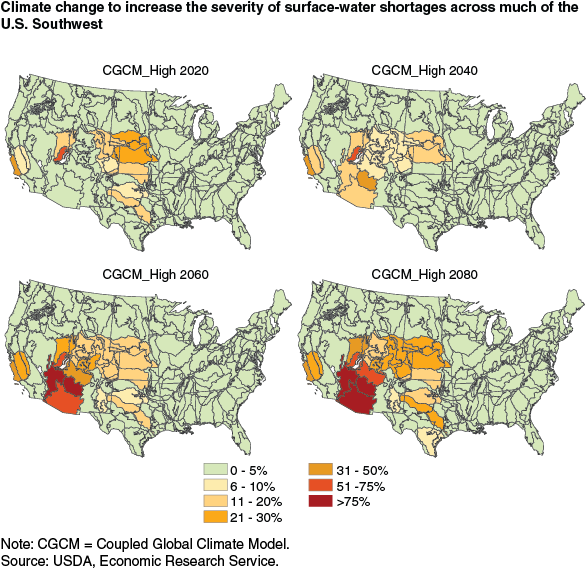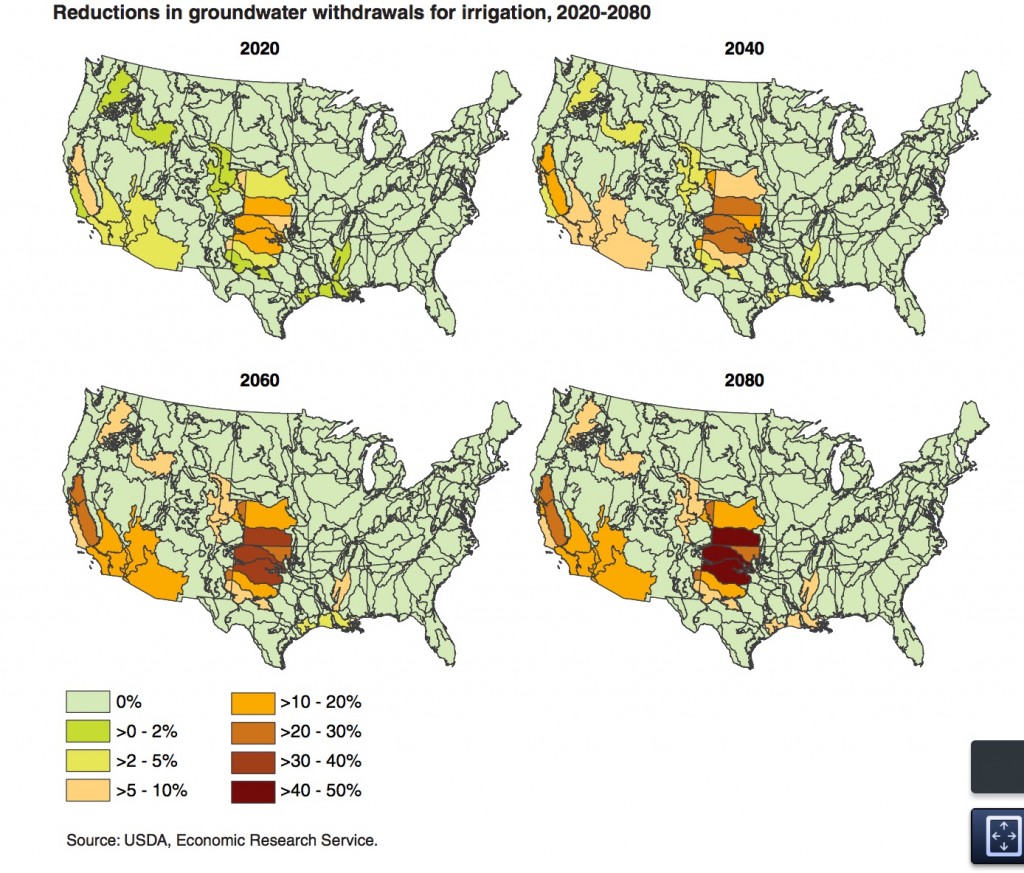Surface-water supply reductions (relative to current agricultural surface-water use) range from 20 percent to more than 75 percent across areas of the Mountain, Pacific, and Plains regions in 2080. The most severe declines occur in the middle and lower Colorado River Basin under virtually all scenarios, while other river systems with headwaters in the central Rocky Mountains and Sierra Nevada range are affected to varying degrees depending on the scenario. In general, surface-water supply impacts for irrigated agriculture under climate change are increasingly severe over time, with the most significant impacts occurring after 2050. These reductions are calculated based on climate conditions averaged over a 20-year window; they do not reflect the magnitude of supply reduction that could occur under multiyear drought conditions.
And a visual aid:

Marshall et al., Climate Change, Water Scarcity, and Adaptation in the U.S. Fieldcrop Sector, USDA, November 2015
Don’t expect groundwater to save Colorado Basin ag:
That’s from Climate Change, Water Scarcity, and Adaptation in the U.S. Fieldcrop Sector, by Elizabeth Marshall, Marcel Aillery, Scott Malcolm, and Ryan Williams, USDA Economic Research Report No. (ERR-201) 119 pp, November 2015

